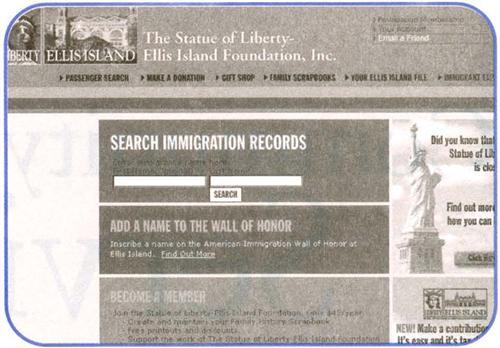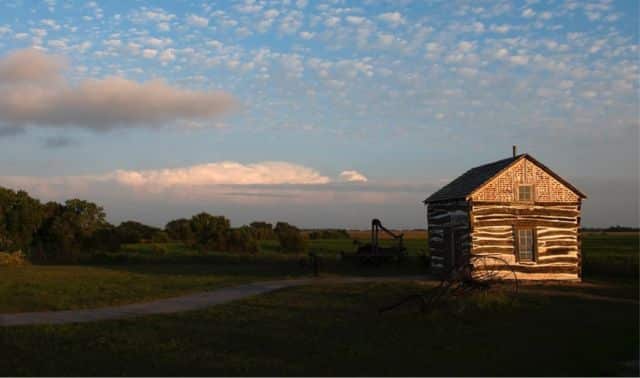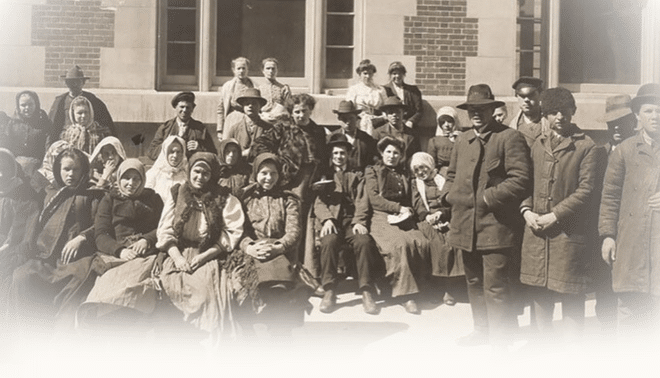
For some researchers, finding their immigrant ancestors in Ellis Island’s massive data-base of passenger arrival lists proves to be a snap. But for others, Ellis Island’s sobriquet of “Island of Hope, Island of Tears” takes on new meaning. You know your ancestors are in that giant computer file somewhere — but where? And why can’t you find them? Or you do find them — you think — but the records don’t show what you thought they would. You’re tired, you’re poor and you’re yearning for some answers.
Don’t give up! Ellis Island’s records can still open a golden door into your past — if you know some essential strategies for turning those tears into hope.
Navigating the records
The Ellis Island database includes the digitized passenger lists of more than 22 million passengers and crew members who entered through the Port of New York between 1892 and 1924 — the peak years of immigrant arrival. Among them are records of 17 million immigrants. Supposedly, finding your immigrant ancestor online is as easy as typing in a name. But for many of us, it’s a bit trickier than that. To demonstrate, I’m going to look for someone I know is on an Ellis Island passenger list.
In the days before the database, I found Angelina (Vallarelli) Ebetino the old-fashioned way: using microfilmed indexes and lists. Angelina arrived on the Verona, which left the Port of Naples on Feb. 5, 1910, and arrived at the Port of New York on Feb. 18, 1910. In the online version of the Ellis Island database, I type in Angelina Ebetino. The results: “No records in the archive match the name Angelina Ebetino.” According to the site, my choices are to:
1. Widen the search by using the last name with only a first initial. I tried that and still no 1 matches for an A. Ebetino.
2. Widen your search by using only the last name. This found just one record, and it was for Salvatore Ebetino, Angelina’s husband. He came in 1906, but Angelina and their children came in 1910.
3. Search on alternate spellings of the last name. There were six alternate spellings, and still no Angelina.
I guess it’s not so easy, is it? That’s not the fault of the zillions of volunteers and programmers who built this amazing data-base — nor should it be surprising. After all, we’re talking about millions of handwritten records that required transcription.
So let’s take a deep breath and stew on this a minute. Obviously, I’m doing something wrong. I know she’s there. One of the problems is that I haven’t been searching under the original name Angelina used in Italy, and you need to know the original name the immigrant went by in the old country. Back in Italy, as in some other Catholic countries such as France, women were recorded in all legal documents by their maiden names, not their married names. So I try Angelina Vallarelli. Still no match. What if I broaden the search to A. Vallarelli? Aha! There she is, but recorded as Angela Vallarelli. (Later research in Italian records revealed that this was in fact her original name.)
Getting creative
Clearly, you sometimes need to use a little creativity when searching for an ancestor in the Ellis Island database. But what do you do if you still can’t find your ancestor? Here are five key questions to ask when you’re stumped:
1. Did your ancestor actually come through Ellis Island? Because Ellis Island was the leading immigrant receiving station of its day, many people think their ancestors came through the Port of New York, when they might have come through one of the other major US ports or Canada.
Going back to Angela Vallarelli, she had six siblings who all immigrated to America, presumably through Ellis Island. I could find all but one. Could he have come through another port? Sure enough, he came through the Port of Boston, not New York.
2. Did your ancestor arrive during the right time span? Remember that the database covers only 1892 to 1924 — after the largest influx from Germany, Scandinavia, Great Britain and Ireland. If your ancestor came before Ellis Island opened, you’ll need to search National Archives and Records Administration (NARA) microfilm.
3. Are you checking for immigrant women under their maiden names? While this custom was more prevalent in Catholic countries, it never hurts to try this strategy even if your ancestor wasn’t Catholic. Whether the woman was traveling alone, with her spouse or with her children, she might be recorded on the list by her maiden name. Don’t know what her maiden name was? If she did travel with her children, they should be recorded under their father’s surname. So look for the kids.
4. What age was she when she arrived? To avoid latching on to the wrong immigrant in the database — another person with the same name or initials, for example — you’ll need to know your ancestor’s approximate age when she (or he) came to America. It’s also helpful to know the town of origin. Any other identifying details can help find the right immigrant.
5. Have you checked for transcription-related spelling variations? Keep in mind that you’re at the mercy of the transcriber, who looked at the microfilmed copy of the passenger list and then tried to interpret the name to enter it into the database. A transcriber unfamiliar with the German clerk’s script may convolute a name or place name you’d find easy to read because you’ve looked at records with that type of script before.
Take, for example, Angela Vallarelli from Terlizzi, Italy: The transcriber had problems reading Terlizzi because the clerk’s T looked like a C. So the transcriber recorded the place of residence as Cerlizzi. If that happened to your ancestor’s name, you won’t have a prayer of finding her in the database. But all is not lost. You can still do it the old-fashioned way — by cranking microfilm.
Although it takes a little brainpower to navigate, the Ellis Island database is a great starting place — and perhaps the greatest thing to come along since reduced-fat cookies. For those who hit the nail on the head, instantly finding their forebears, the database is a dream come true. But if you’re having problems tracking down your Ellis Island immigrants, the island of hope and tears can be just as challenging for you as it was for your ancestors. Not to worry. Start with these strategies, get creative, and if you still can’t find your Ellis Island immigrant — well, there’s always the library.
Step in the Right Direction
Microfilm isn’t the only alternative to a standard search on the Ellis Island Web site. You also can tap its immigration-records database through a back door: a handy Web site called Searching the Ellis Island Database in One Step <www.jewishgen.org/databases/EIDB/ ellis.html >. This tool, the brainchild of Stephen Morse, allows you to search on many more parameters — including ethnicity, port of entry, ship name and year of arrival — than does Ellis Island’s official search.
Although Morse’s site will search the Ellis Island database with as little information as a surname initial, you can narrow your results by entering every detail you know about your immigrant forebears. For example, choose from more than 732 ports of departure and 100 ethnicities.
From the January 2004 Family Tree Magazine.




